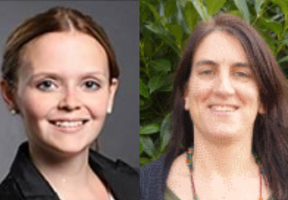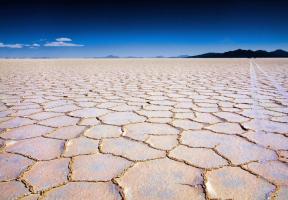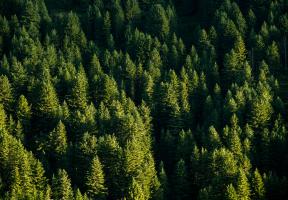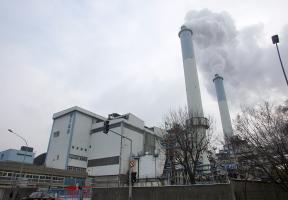Dealing with Deforestation
Published on 09.16.201510 min read
While deforestation is still a necessity in many of the world's poorest regions due to the need for farmland and energy resources, it reduces the carbon capture capacity of plants and soil and makes it harder to fight against climate change. A global governance system is beginning to emerge to deal with deforestation.
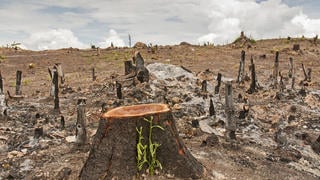
© THINKSTOCK - Deforestation continues worldwide, albeit at a slower pace, as land is cleared for farming, wood is used for energy and fires destroy forests.
Deforestation is continuing, but more slowly
Covering 31% of the planet's landmass, forests are the biggest absorber of carbon on Earth. They make up most of the land-based , which captures and stores the equivalent of 33% of global CO2 emissions each year. However, persistent deforestation is compromising this absorption capacity as combustion and decomposition produce additional greenhouse gas emissions. These gross releases account for 11% of anthropogenic CO2 emissions each year. The negative impact of deforestation has made sustainable forest management a key component in the fight against climate change.
Deforestation is continuing worldwide, even if it has slowed somewhat over the past few decades. According to the Food and Agriculture Organization (FAO), around 13 million hectares of forest – an area equivalent to Greece – were removed each year between 2000 and 2010, down from 16 million hectares a year in the 1990s.1
Developed countries, generally located in temperate climates, underwent deforestation several centuries ago. The situation has now stabilized and some countries, such as France, have actually increased their forested areas. Today, deforestation is most evident in the world's poor tropical regions, and the steady shrinkage in their forests can be easily seen by satellite.2
Poor countries' needs
For the most part, deforestation in the world's three main basins (Latin America, Central Africa and Southeast Asia) stems primarily from logging and the clearing of woodlands for farming and ranching. The spectacular forest fires in California and Australia play a lesser, albeit growing role.
In Latin America, and especially Brazil, forests are being pushed back by huge soy and corn farms and cattle ranches.
In central Africa, small subsistence farms are the culprit, with slash-and-burn techniques carving out new plots from the forest or grasslands each year.
In Southeast Asia, and Indonesia in particular, vast oil palm plantations are the main cause of deforestation. Palm oil is used in the food industry and to produce . Although the European Union has issued rules on biofuel, notably concerning reforestation, and Indonesia has adopted criteria, they have not been able to fully rein in illegal operations.
In addition to the need for farmland, forests in developing countries are taxed by the need for firewood. More than two billion people use wood-derived fuel as their main energy source. In Africa, more than 90% of cut wood is used for energy. Kenya, which has been heavily impacted by this practice, has set an objective of planting 100 million trees a year to build its forest cover back up to 10% of its land area. This percentage had fallen to 3% in 1990 before rising to 7% in 2013.
REDD programs
Efforts are being made to fight against deforestation at both the national level in several countries and at the global level. Brazil, for example, rolled out ambitious and enforceable legislation in 2004 to preserve the Amazon forest. Brazil and Indonesia, which together had the highest net loss of forest cover in the 1990s, have significantly reduced the rate of shrinkage.
At the international level, the United Nations has launched Reducing Emissions from Deforestation and Forest Degradation (REDD) and REDD+.
These programs emphasize measures that encourage corporations and communities to practice farming methods that do not encroach on forests, for example by improving crop yields or using forest products sustainably, without deteriorating wooded areas. Reforestation, which has been extensively applied in China, is a useful technique, but it should not divert the focus from avoiding deforestation in the first place. One reforested hectare does not equal one deforested hectare, as in most cases the reforested area does not have the same quality as a natural forest in terms of variety of species and protection of .
The idea behind the REDD programs is to financially reward countries and communities that manage to reduce deforestation. The funding can come from institutions such as the World Bank or from non-governmental organizations (NGOs) that can act at the local level to remunerate cooperating villages. The fight against deforestation in Brazil's Amazon forest has been financed with bilateral aid from Norway. Specific mechanisms also allow corporations to finance forest projects and obtain credits that can be traded on carbon markets. Lastly, a portion of the funds set aside to combat is allocated to the fight against deforestation, underscoring the fact that this issue is a key component in international climate negotiations.







